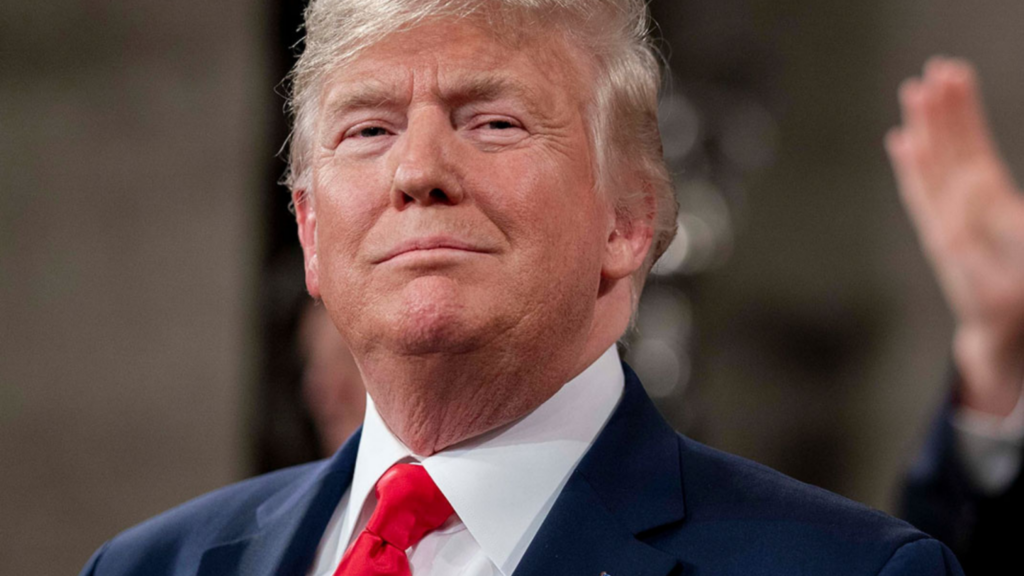Milei Secures IMF Loans Out of Necessity But May Wish He Hadn’t
On 11th April, the International Monetary Fund (IMF) formally approved a 4-year USD$20 billion extension to Javier Milei’s Argentina, with an immediate imbursement of $12 billion, to add to Argentina’s existing debt with the organisation of over $40 billion. Incredibly, this is the South American state’s 23rd attempt at a bailout with the IMF since 1958 (Debre, 2025(a)) and is globally recognised for defaulting on its debts. The World Bank and Inter-American Development Bank also announced respective deals totalling $22 billion (Sexton, 2025).
For Javier Milei, the infamous ‘anarcho-capitalist’, climate change-denying, and chainsaw-wielding President, it is a lifeline in his attempts to turn around the debt-ridden and perpetually problematic economy. Since coming to power in December of 2023, Milei has sought to get a firm grasp of the state’s spiralling and worlds-highest inflation inherited from reckless monetary and fiscal policy from his left-leaning predecessors. His approach has involved drastic public spending cuts and purposeful devaluation of the country’s currency (peso) (Plummer, 2024). These cuts initially had a definitive negative effect on the Argentinian people as key public services were cut and entire government departments were axed. This pushes poverty levels to its highest level since 2003, with over 50% of the population affected (Rey, 2024).
Since then, Milei’s interventions seem to be working for the most part, even if some sizeable caveats in pensions and food prices still remain. Monthly inflation came down from 211% in December 2023 to around 2% in early 2025 (Milz, 2025). The government had a fiscal surplus for the first time in many years (World Bank, 2025). The austerity and deregulation measures have clearly impressed the IMF enough to justify extending the lines of credit further and so have banked Milei a degree of credibility in the eyes of the international economic community. One contingent aspect of the IMF’s loan is to continue the ‘good work’ already in place and entrench them further, by transitioning to a more open foreign exchange mechanism, the easing of restrictions, and broader reforms to a market-oriented economy (International Monetary Fund, 2025) – all of which aligns to Milei’s agenda. In early March, Milei issued an executive order to pre-approve the IMF loan, controversially bypassing the country’s opposition-dominated legislature where it may have easily been defeated (Nugent, 2025).
However, it’s not all plain sailing from here. While Milei currently has credibility, it is not guaranteed to last. What this loan represents is not the end but merely the beginning – it is the tester for global markets and foreign investment, an in-situ use case of normalisation behaviour to show Argentina has turned a corner, with wider investment sought further along to fill up currency reserves at better interest rates.
There are myriad risks that threaten to befall his vision of normalising Argentina’s economy through this loan, with some material than others. One central issue is that in order to fulfil its obligations to the loan, the government must accumulate $4 billion in net reserve by the end of 2025 and pay the same amount in debt maturities and interest by July (Doll, 2025).
IMF
One issue is the nature of the loan itself – $11 billion of the IMF’s loan will cover interest repayments back to the IMF for the next 4 years, meaning that Argentina will peak in 2026 at a $58 billion exposure (Marczak and Mühleisen, 2025). This is risky for both parties, given the default history. Failure to instigate proper change or engaging with fiscal backsliding threatens any hope for Argentina for good.
Capital Flight
In lifting the strict capital controls, known locally as “the clamp” due to the rigidity, it both frees up already-existing Argentinian assets in place to flee the country in the short term but also allows any eventual investment to leave at the first sign of trouble. Given Argentina’s wildly varying privatisation-nationalisation fluctuations with regime changes, investor sentiment will be risk-averse. Further, contemporary global market chaos will be a large factor in the equation too and so a serial-defaulting country may seem an even worse bet than previously.
Currency Fluctuations
The new policy cuts the peso from its peg to the US dollar to instead trade between certain ‘bandings’ (that will expand over time), at which the Argentine central bank will be able to intervene – a risky move as economists and investors have warned that the central bank may burn through its already-low foreign currency reserves at an alarming rate should it need to do so (Debre, 2025(b)).
Crops, Climate Change, and Exports
The nature of Argentina’s economy is that it relies fairly heavily on exports of the country’s natural resources and agricultural products. Using Argentina’s ‘Top 5’ exports in 2023 (the most recent dataset) and replicating the commodities back to 2018 shows that agricultural products like soy meal, corn, and soybean oil all contribute incredibly large proportions of total exports on their own. However, when combined with other finite resources like crude oil and lower-tier manufacturing in delivery trucks, these 5 commodities contribute roughly 35-41% of total exports in a given year. Argentina is also vital to the world’s supply chain for these exports: it ranks first in production of soybean oil, 2nd for soy meal (a key foodstuff for animal feed), and 3rd for corn.
Crops such as these, along with wheat – which outsold crude oil in all highlighted years barring 2023 (following a disastrous drought in 2022) – are heavily reliant on rainfall deposits as large swathes of the agricultural land lack irrigation and electrification, leaving them at the mercy of the weather. Where and when the rain falls is crucial for yields as lower rainfall in January and February are significantly significant with correlated drops in central bank reserve accumulation, and Argentina is projected to become drier overall in the main agricultural areas of soy, wheat, corn, and sunflower (Bortz and Toftum, 2024). High temperatures throughout April have stressed the northern regions and are predicted to reduce local yields by 22%, with some areas expected to reduce corn yield by 40% (Cook, 2025). Furthermore, the cyclical nature of agricultural exports on the economy means that the strong second quarter flows are likely to dry up by the end of July (Doll, 2025). This issue may be exacerbated if producers don’t opt to sell them at all, as the stronger peso in the current system promotes incentive hoarding until the business conditions are better (Nugent, 2025).
Javier Milei has a lot to consider ahead of his pivotal midterm elections in October but he may find that the gamble with the IMF is as risky politically as it is economically.
References
- Bortz, P. G., Toftum, N. (2024). ‘Changes in rainfall, agricultural exports and reserves: macroeconomic impacts of climate change in Argentina’, Journal of Environmental Economics and Policy, Vol. 13(2), pp. 243-258.
- Cook, C. 2025. Officials raise alarm as country’s key crop forecast drops by over 1 million tons – here’s what it means for global food prices. Available at: https://www.thecooldown.com/sustainable-food/argentine-soybean-crop-drought-forecast/. (Accessed: 26th April 2025).
- Debre, I. 2025(a). The IMF reaches a deal with troubled Argentina on a $20 billion bailout. Available at: https://apnews.com/article/argentina-imf-debt-bailout-4eae101f7575dc735df74c9aa0fac2cf. (Accessed: 26th April 2025).
- Debre, I. 2025(b). Argentina secures IMF loan and ends most capital controls in key milestones for President Milei. Available at: https://www.pbs.org/newshour/world/argentina-secures-imf-loan-and-ends-most-capital-controls-in-key-milestones-for-president-milei. (Accessed: 26th April 2025).
- Doll, I. O. 2025. Milei defies forecasts so far as Argentina’s peso strengthens. Available at: https://www.batimes.com.ar/news/economy/milei-defies-forecasts-so-far-as-argentinas-peso-strengthens.phtml. (Accessed: 26th April 2025).
- International Monetary Fund. 2025. IMF Executive Board Approves 48-month US$20 billion Extended Arrangement for Argentina. Available at: https://www.imf.org/en/News/Articles/2025/04/12/pr25101-argentina-imf-executive-board-approves-48-month-usd20-billion-extended-arrangement. (Accessed: 26th April 2025).
- Marczak,J., Mühleisen, M. 2025. Four questions (and expert answers) about Argentina’s new $20 billion financial rescue. Available at: https://www.atlanticcouncil.org/blogs/new-atlanticist/four-questions-and-expert-answers-about-argentinas-new-20-billion-financial-rescue/. (Accessed: 26th April 2025).
- Milz, T. 2025. Argentina’s pensioners are hit hard by Javier Milei’s austerity measures, but protests are muted. Available at: https://www.nzz.ch/english/despite-hardships-protests-against-javier-milei-remain-muted-ld.1877450. (Accessed: 26th April 2025).
- Nugent, C. 2025. Argentina’s Javier Milei signs decree to pave way for IMF loan deal. Available at: https://www.ft.com/content/bb251420-c0fb-47fc-a372-e3883632a6c2. (Accessed: 26th April 2025).
- Plummer, R. 2024. Have Milei’s first six months improved the Argentine economy?. Available at: https://www.bbc.co.uk/news/articles/cm55yv0g0veo. (Accessed: 26th April 2025).
- Rey, D. 2024. Milei’s first 100 days: Argentines struggle to make ends meet as support for president remains high. Available at: https://apnews.com/article/milei-100-days-argentina-poverty-inflation-6011d71963b4203accbfadb4044cd43e. (Accessed: 26th April 2025).
- Sexton, K. 2025. IMF, World Bank approve new bailouts for Argentina. Available at: https://www.dw.com/en/imf-world-bank-approve-new-bailouts-for-argentina/a-72225989. (Accessed: 26th April 2025).
World Bank. 2025. The World Bank in Argentina. Available at: https://www.worldbank.org/en/country/argentina/overview. (Accessed: 26th April 2025).



